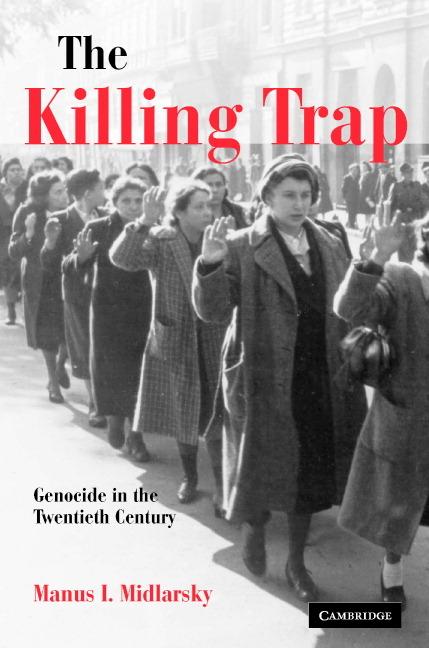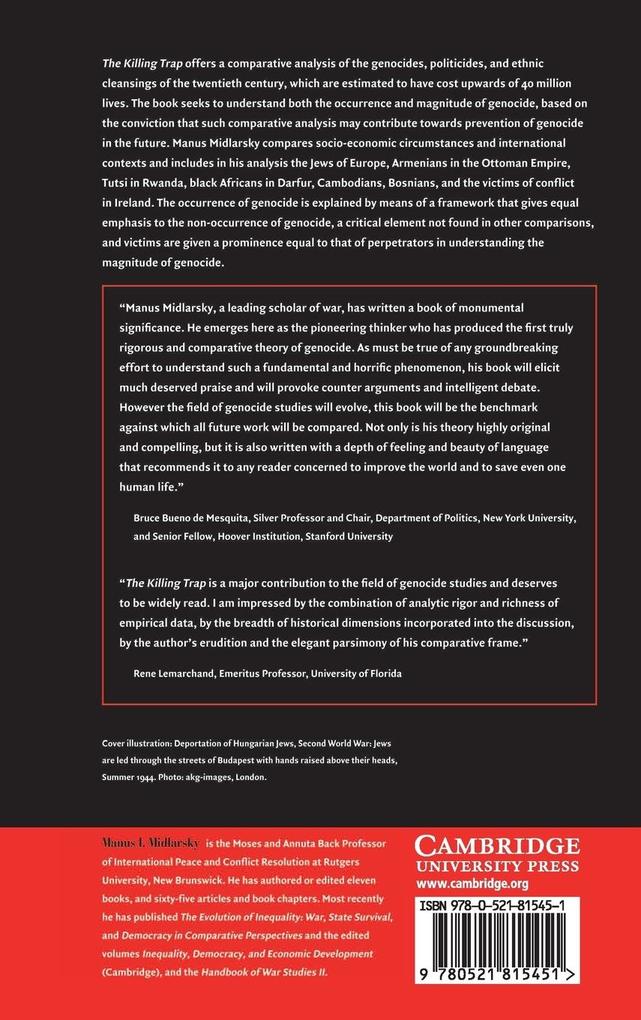The Killing Trap offers a comparative analysis of the genocides, politicides and ethnic cleansings of the twentieth century, which are estimated to have cost upwards of forty million lives. The book seeks to understand both the occurrence and magnitude of genocide, based on the conviction that such comparative analysis may contribute towards prevention of genocide in the future. Manus Midlarsky compares socio-economic circumstances and international contexts and includes in his analysis the Jews of Europe, Armenians in the Ottoman Empire, Tutsi in Rwanda, black Africans in Darfur, Cambodians, Bosnians, and the victims of conflict in Ireland. The occurrence of genocide is explained by means of a framework that gives equal emphasis to the non-occurrence of genocide, a critical element not found in other comparisons, and victims are given a prominence equal to that of perpetrators in understanding the magnitude of genocide.
Inhaltsverzeichnis
Preface; Part I. Introduction: 1. Preliminary considerations; 2. Case selection; Part II. Explaining Perpetrators: Theoretical Foundations: 3. Continuity and validation; 4. Prologue to theory; 5. A theoretical framework; Part III. The Theory Applied: 6. Threat of numbers, realpolitik, and ethnic cleansing; 7. Realpolitik and loss; 8. The need for unity and altruistic punishment; 9. Perpetrating states; Part IV. Victim Vulnerability: Explaining Magnitude and Manner of Dying: 10. Raison d'état, raison d'église; 11. Cynical realpolitik and the unwanted; 12. High victimization: the role of realpolitik; 13. Inequality and absence of identification; 14. On the possibility of revolt and altruistic punishment; Part V. Exceptions: 15. A dog of different nature: the Cambodian Politicide; 16. Dogs that didn't bark I: realpolitik and the absence of loss; 17. Dogs that didn't bark II: affinity and vulnerability reduction; Part VI. Conclusion: 18. Findings, consequences, and prevention.















